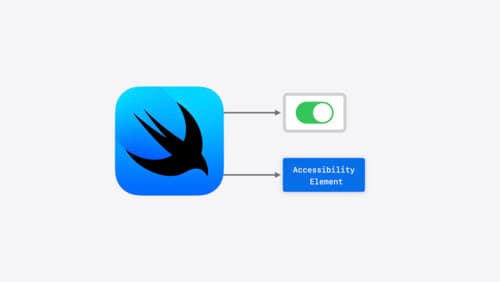attributed string in swiftui
Asked on 2024-07-31
1 search
To work with attributed strings in SwiftUI, you can use various tools and techniques discussed in different sessions at WWDC 2024. Here are some key points:
-
Dynamic Type and Attributed Strings:
- In the session Get started with Dynamic Type, it is mentioned that you can interpolate images directly in text and use
NSAttributedStringin UIKit to create an attributed string with an image as anNSTextAttachment. This can be wrapped in SwiftUI to achieve similar behavior.
- In the session Get started with Dynamic Type, it is mentioned that you can interpolate images directly in text and use
-
Accessibility and Attributed Strings:
- The session Catch up on accessibility in SwiftUI discusses modifying the label of a view with content that may not be static. This can be useful when you need to append dynamic content like ratings to a label, ensuring accessibility is maintained.
-
Multilingual Support and Attributed Strings:
- In the session Build multilingual-ready apps, it is highlighted how to add a color attribute to an attributed string. This is particularly useful for highlighting parts of the text without breaking the text flow, which is important for multilingual support.
-
Custom Visual Effects with Attributed Strings:
- The session Create custom visual effects with SwiftUI introduces the new text attribute protocol and text renderer in iOS 18. By implementing this protocol, you can pass data from your text to your text renderer and apply custom attributes to text.
-
New Features in SwiftUI:
- The session What’s new in SwiftUI covers new capabilities like programmatic access to text selection and text suggestions, which can enhance the user experience when working with text fields and attributed strings.
Relevant Sessions:
- Get started with Dynamic Type
- Catch up on accessibility in SwiftUI
- Build multilingual-ready apps
- Create custom visual effects with SwiftUI
- What’s new in SwiftUI
These sessions provide a comprehensive overview of how to handle attributed strings in SwiftUI, ensuring both functionality and accessibility.

Catch up on accessibility in SwiftUI
SwiftUI makes it easy to build amazing experiences that are accessible to everyone. We’ll discover how assistive technologies understand and navigate your app through the rich accessibility elements provided by SwiftUI. We’ll also discuss how you can further customize these experiences by providing more information about your app’s content and interactions by using accessibility modifiers.

What’s new in SwiftUI
Learn how you can use SwiftUI to build great apps for any Apple platform. Explore a fresh new look and feel for tabs and documents on iPadOS. Improve your window management with new windowing APIs, and gain more control over immersive spaces and volumes in your visionOS apps. We’ll also take you through other exciting refinements that help you make expressive charts, customize and layout text, and so much more.

Build multilingual-ready apps
Ensure your app works properly and effectively for multilingual users. Learn best practices for text input, display, search, and formatting. Get details on typing in multiple languages without switching between keyboards. And find out how the latest advances in the String Catalog can make localization even easier.
